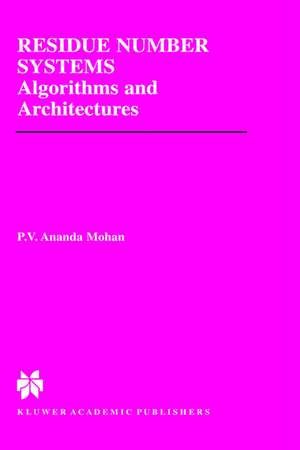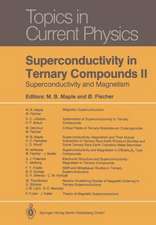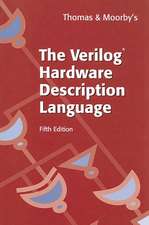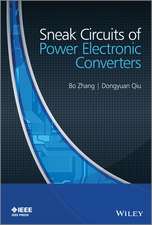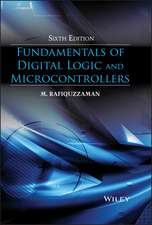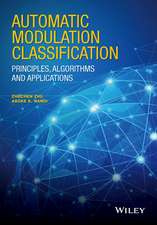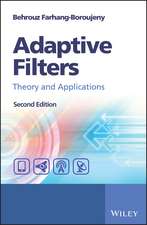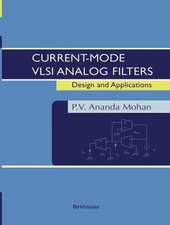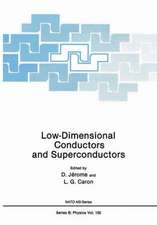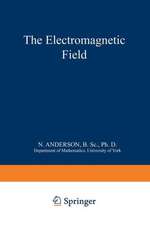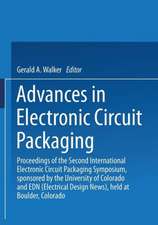Residue Number Systems: Algorithms and Architectures: The Springer International Series in Engineering and Computer Science, cartea 677
Autor P.V. Ananda Mohanen Limba Engleză Hardback – 30 apr 2002
| Toate formatele și edițiile | Preț | Express |
|---|---|---|
| Paperback (2) | 639.25 lei 6-8 săpt. | |
| Springer Us – 31 oct 2012 | 639.25 lei 6-8 săpt. | |
| Springer International Publishing – 23 iun 2018 | 705.67 lei 6-8 săpt. | |
| Hardback (2) | 646.30 lei 6-8 săpt. | |
| Springer Us – 30 apr 2002 | 646.30 lei 6-8 săpt. | |
| Springer International Publishing – 24 oct 2016 | 712.12 lei 6-8 săpt. |
Din seria The Springer International Series in Engineering and Computer Science
- 24%
 Preț: 1041.98 lei
Preț: 1041.98 lei - 20%
 Preț: 643.50 lei
Preț: 643.50 lei - 18%
 Preț: 1225.62 lei
Preț: 1225.62 lei - 18%
 Preț: 965.02 lei
Preț: 965.02 lei - 20%
 Preț: 646.12 lei
Preț: 646.12 lei - 18%
 Preț: 948.79 lei
Preț: 948.79 lei - 20%
 Preț: 646.62 lei
Preț: 646.62 lei - 15%
 Preț: 637.46 lei
Preț: 637.46 lei - 20%
 Preț: 643.83 lei
Preț: 643.83 lei - 18%
 Preț: 949.23 lei
Preț: 949.23 lei - 20%
 Preț: 644.48 lei
Preț: 644.48 lei - 20%
 Preț: 994.92 lei
Preț: 994.92 lei - 20%
 Preț: 645.97 lei
Preț: 645.97 lei - 18%
 Preț: 946.87 lei
Preț: 946.87 lei - 20%
 Preț: 995.57 lei
Preț: 995.57 lei - 18%
 Preț: 956.99 lei
Preț: 956.99 lei - 20%
 Preț: 644.98 lei
Preț: 644.98 lei - 15%
 Preț: 649.54 lei
Preț: 649.54 lei - 18%
 Preț: 950.21 lei
Preț: 950.21 lei - 18%
 Preț: 1221.38 lei
Preț: 1221.38 lei - 18%
 Preț: 957.62 lei
Preț: 957.62 lei - 15%
 Preț: 643.99 lei
Preț: 643.99 lei - 18%
 Preț: 948.47 lei
Preț: 948.47 lei - 18%
 Preț: 947.35 lei
Preț: 947.35 lei - 20%
 Preț: 1284.65 lei
Preț: 1284.65 lei - 20%
 Preț: 1628.31 lei
Preț: 1628.31 lei - 20%
 Preț: 1285.78 lei
Preț: 1285.78 lei
Preț: 646.30 lei
Preț vechi: 760.35 lei
-15% Nou
Puncte Express: 969
Preț estimativ în valută:
123.67€ • 132.25$ • 103.11£
123.67€ • 132.25$ • 103.11£
Carte tipărită la comandă
Livrare economică 17 aprilie-01 mai
Preluare comenzi: 021 569.72.76
Specificații
ISBN-13: 9781402070310
ISBN-10: 1402070314
Pagini: 270
Ilustrații: XIII, 253 p.
Dimensiuni: 155 x 235 x 20 mm
Greutate: 0.58 kg
Ediția:2002
Editura: Springer Us
Colecția Springer
Seria The Springer International Series in Engineering and Computer Science
Locul publicării:New York, NY, United States
ISBN-10: 1402070314
Pagini: 270
Ilustrații: XIII, 253 p.
Dimensiuni: 155 x 235 x 20 mm
Greutate: 0.58 kg
Ediția:2002
Editura: Springer Us
Colecția Springer
Seria The Springer International Series in Engineering and Computer Science
Locul publicării:New York, NY, United States
Public țintă
Professional/practitionerCuprins
1 Introduction.- 1.1 Historical survey.- 1.2 Basic definitions of RNS.- 1.3 Addition operation in RNS.- 1.4 Conclusion.- 2 Forward and Reverse Converters for General Moduli Set.- 2.1 Introduction.- 2.2 Mixed Radix Conversion based techniques.- 2.3 CRT based conversion techniques.- 2.4 Binary to RNS conversion techniques.- 2.5 Conclusion.- 3 Forward and Reverse Converters for General Moduli Set {2k-l,2k,2k+l}.- 3.1 Introduction.- 3.2 Forward conversion architectures.- 3.3 Reverse converters for the moduli set {2k-1, 2k, 2k+1}.- 3.4 Forward and Reverse converters for the moduli set{2k, 2k-l, 2k-1-l}.- 3.5 Forward and reverse converters for the moduli sets {2n+l, 2n,2n-l}.- 3.6 Conclusion.- 4 Multipliers for RNS.- 4.1 Introduction.- 4.2 Multipliers based on index calculus.- 4.3 Quarter square multipliers.- 4.4 Taylor's multipliers.- 4.5 Multipliers with in-built scaling.- 4.6 Razavi and Battelini architectures using periodic properties of residues.- 4.7 Hiasat's Modulo multipliers.- 4.8 Eueithy and Bayoumi modulo multiplication technique.- 4.9 Brickell's algorithm based multipliers and extensions.- 4.10 Stouraitis et al architectures for (A.X + B) mod mi realization.- 4.11 Multiplication using Redundant Number system.- 4.12 Conclusion.- 5 Base Extension, Scaling and Division Techniques.- 5.1 Introduction.- 5.2 Base extension and scaling techniques.- 5.3 Division in residue number systems.- 5.4 Scaling in the Moduli set {2n-1, 2n, 2n+1}.- 5.5 Conclusion.- 6 Error Detection and Correction in RNS.- 6.1 Introduction.- 6.2 Szabo and Tanaka technique for Error detection and Correction.- 6.3 Mendelbaum's Error correction technique.- 6.4 Jenkins's Error correction techniques.- 6.5 Ramachandran's Error correction technique.- 6.6 Su and Lo unified technique for scaling and error correction.- 6.7 Orto et al technique for error correction and detection using only one redundant modulus.- 6.8 Conclusion.- 7 Quadratic Residue Number Systems.- 7.1 Introduction.- 7.2 Basic operations in QRNS.- 7.3 Modified quadratic residue number systems.- 7.4 Jenkins and Krogmeier implementations.- 7.5 Taylor's single modulus ALU for QRNS.- 7.6 Conclusion.- 8 Applications of Residue Number Systems.- 8.1 Introduction.- 8.2 Digital Analog Converters.- 8.3 FIR Filters.- 8.4 Recursive RNS filter implementation.- 8.5 Digital frequency synthesis using RNS.- 8.6 Multiple Valued Logic Based RNS designs.- 8.7 Paliouras and Stouraitis architectures using moduli of the form rn.- 8.8 Taheri, Jullien and Miller technique of High-speed computation in rings using systolic Architectures.- 8.9 RNS based implementation of FFT structures.- 8.10 Optimum Symmetric Residue Number System.- 8.11 Conclusion.- 9 References.
Textul de pe ultima copertă
This new and expanded monograph improves upon Mohan's earlier book, Residue Number Systems (Springer, 2002) with a state of the art treatment of the subject. Replete with detailed illustrations and helpful examples, this book covers a host of cutting edge topics such as the core function, the quotient function, new Chinese Remainder theorems, and large integer operations. It also features many significant applications to practical communication systems and cryptography such as FIR filters and elliptic curve cryptography.
Starting with a comprehensive introduction to the basics and leading up to current research trends that are not yet widely distributed in other publications, this book will be of interest to both researchers and students alike.
Starting with a comprehensive introduction to the basics and leading up to current research trends that are not yet widely distributed in other publications, this book will be of interest to both researchers and students alike.
Caracteristici
Up-to-date coverage of research in the field of residue number systems Includes new hardware design paradigms such as shared logic for efficient RNS system design Includes 150 pages of new and updated material Includes supplementary material: sn.pub/extras
